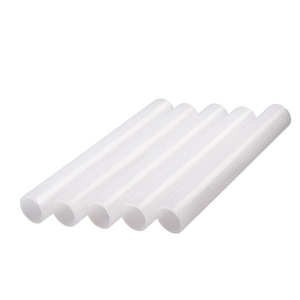(12331 products available)



















































































































































































































The 20mm PE pipes are made of polyethylene, designed for various applications in the home and garden industry. They are well-known for their durability, flexibility, and resistance to corrosion. Various types of 20mm PE pipes serve distinct purposes:
PE Pipe:
A PE pipe is a 20mm polyethylene pipe. It's lightweight, flexible, and resistant to corrosion. It's commonly used for water supply, drainage, and gas lines.
20mm PE Water Pipe:
This pipe is specifically designed for transporting potable and non-potable water. It's manufactured under stringent quality standards to ensure its safety for human consumption.
20mm PE Irrigation Pipe:
These pipes are designed for agricultural irrigation systems. They can withstand the pressure of water used for watering crops and are durable enough to handle the demands of farming.
20mm PE Duct Pipe:
Duct pipes protect and manage electrical conduits and communication cables. They prevent external damage to the cables and pipes and help organize the wiring system within a building.
20mm PE Drainage Pipe:
These are used to drain water and waste in residential and commercial buildings. They help prevent water logging and maintain proper sanitation within the premises.
20mm PE Gas Pipe:
Gas pipes transport natural gas or other gaseous fuels from the supply source to appliances like stoves and heaters. They are built to handle gas pressure and ensure a secure gas flow in the building.
20mm PE Electrical Conduit:
Electrical conduits protect electrical wires from moisture, dust, and physical damage. They provide a safe pathway for electricity transmission within a building.
20mm PE pipes are used in many industries and applications because of their versatility and durability. Below are some key usage scenarios:
Wholesale buyers should consider these factors when choosing PE pipes for their customers.
Purpose of the pipes
PE pipes serve various functions. They transport water, gas, and sewage. Some pipes are for irrigation and industrial use. Know the end user's application to select the suitable pipes.
Material and durability
PE pipes have high-density polyethylene. It makes them corrosion-resistant and long-lasting. But for some applications, pipes with added materials for reinforcement and protection are better.
Pipe size and thickness
The pipes carry different fluids at varying pressure levels. Select the suitable pipe size and wall thickness for the application. Use a larger diameter and thicker wall for high-pressure water supply. A smaller diameter and thin wall are okay for low-pressure irrigation.
Standards and certifications
PE pipe standards and certifications differ by region. Know the local standards and select pipes that meet them. Pipes with international certifications like ASTM and ISO are also acceptable in many regions. They assure buyers of the pipes' quality and safety.
Environmental considerations
PE pipes are eco-friendly. They can recycle them with minimal environmental impact. Consider the pipes' environmental impact. Select the pipes with the least effect on nature. Choose pipes with good drainage and those that can degrade in the landfill over time.
Cost and budget
PE pipes are affordable. Pipes with added features and coatings cost more. Balance the price and the features. Select the pipes that will give the best value for the budget.
Supplier reliability
Select a supplier with a good track record. Check their reviews and ratings. Ensure they comply with industry standards. They should have the capacity to supply the needed pipes promptly. Choose a supplier who will deliver on time to reduce the buyer's inventory costs.
Q1. What are the advantages of 20mm PE pipes?
A1. 20mm PE pipes are lightweight, flexible, and resistant to chemicals and corrosion. They can be easily transported and installed, making them suitable for various applications, including water supply, irrigation, and gas distribution.
Q2. What factors should be considered when selecting a 20mm PE pipe?
A2. Consider the intended application, pressure rating, installation conditions, and compatibility with existing systems. Choosing the right pipe for the specific needs will ensure optimal performance and longevity.
Q3. How can 20mm PE pipes be joined together?
A3. 20mm PE pipes can be joined using socket fusion, electrofusion fittings, compression fittings, or mechanical couplings. The joining method depends on the installation requirements and available equipment.
Q4. Are 20mm PE pipes environmentally friendly?
A4. PE pipes are made from recyclable materials and have a long lifespan, reducing the need for replacements. Additionally, their lower energy consumption during production compared to other pipes makes them more eco-friendly choices.
Q5. What is the expected lifespan of a 20mm PE pipe?
A5. These pipes can last for 50 years or more with proper installation and maintenance, providing a reliable and durable solution for transporting fluids and gases.